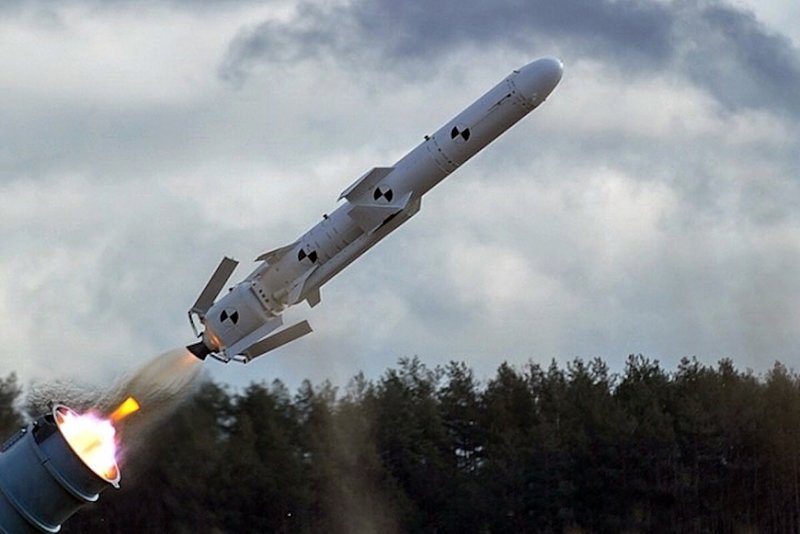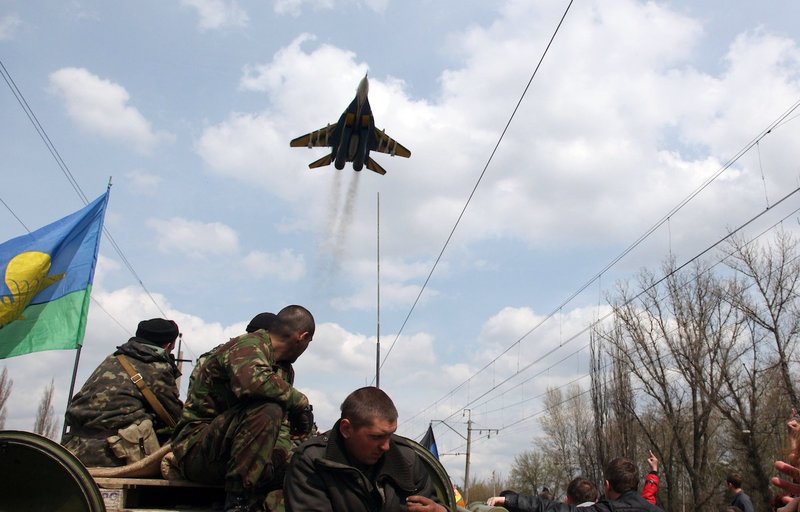Ukraine Blew Up a Russian Airfield Far Behind the Lines, and No One Is Sure How

Damage to the Saki air base in Crimea a day after a Ukrainian strike on the field. Photo courtesy of Maxar Technologies, composite by Coffee or Die Magazine.
KYIV, Ukraine — Russian vacationers relaxing on Novofedorivka beach on Tuesday, Aug. 9, were startled by several massive explosions coming from the nearby Saki air base. Videos of the moment, which users subsequently posted to social media sites, showed a delayed shock wave and, within seconds, several churning, dark mushroom clouds billowing into the clear calm of a sunny summer day in Russian-occupied western Crimea.
Later, videos on social media showed highways leaving the Crimean Peninsula jammed with fleeing vacationers.
Crimea has been at the heart of Russia's war on Ukraine since it invaded and seized the peninsula more than eight years ago. But Tuesday's blasts, almost six months into Moscow’s full-scale invasion, rocked a key Russian airbase, destroying many Russian warplanes and buildings, according to recent reports.
The attack — more than 100 miles from any active fighting — not only may have destroyed as many as a dozen Russian warplanes but might also mark the beginning of a new, more offensive posture by Ukrainian forces.
“This Russian war against Ukraine and against the entire free Europe began with Crimea and must end with Crimea — with its liberation,” Ukrainian President Volodymyr Zelenskyy said in a Tuesday-night address, just hours after the blasts, which marked the most destructive day for Russian air power since World War II.
"The Kremlin can’t admit the fact that there was another devastating blow to their capabilities, but even more important, to their prestige," said Alexander Khara, a Ukrainian defense expert and deputy chair of the Black Sea Institute of Strategic Studies.
"But even more humiliating is that it happened in Crimea, an unsinkable aircraft carrier, as Russians call it," Khara told Coffee or Die Magazine.
And official Ukrainian social media outlets were quick to celebrate the moral victory.
Commercial satellite photos taken this week appear to show at least three craters and multiple destroyed aircraft at Saki air base, home of the Russian Black Sea Fleet’s 43rd Independent Naval Attack Aviation Regiment. Estimates of the damage by open-source investigators ranged from eight to 19 destroyed Russian aircraft, including fighters and attack planes. In a Thursday-afternoon tweet, Ukraine’s air force reported that “around 10” Russian aircraft were destroyed.
Kyiv has not officially claimed or denied responsibility for the blasts. In a Wednesday tweet, Rob Lee, a fellow at the Foreign Policy Research Institute who specializes in Russia’s armed forces, estimated the regiment lost “more than half of the aircraft in its Su-24m/MR squadron and nearly half of its Su-30 squadron.”
Although it's not immediately clear what caused the explosions at the Saki airbase, all signs point to some sort of Ukrainian operation. Various sources have attributed the blasts to the work of Ukrainian special operations teams or Ukrainian missiles. One Ukrainian official said partisans assisted in the attack. Notably, the appearance of three distinct craters points to a deliberate, targeted attack, contradicting Moscow’s assertion that munitions stored at the base had accidentally exploded.
“One way to interpret those craters is precise strikes from a long range munition, which suggests it’s a pretty good time for Russian holiday-makers in Crimea to make use of the Kerch Strait Bridge while they still can,” Eliot Higgins, founder of the investigative site Bellingcat, wrote Wednesday on Twitter, referring to the single bridge that connects the occupied Crimean Peninsula to mainland Russia.
In a separate tweet, Higgins went on to estimate that the craters visible in satellite imagery measured about 20 to 25 meters across, some 65 to 82 feet, “which would mean a pretty big munition.”

Maxar Technologies, a satellite-imaging company, posted this image to its Facebook page of damage to the Saki air base in Crimea a day after a Ukrainian strike on the field. Photo courtesy of Maxar Technologies.
The Saki air base is about 140 miles from the nearest territory controlled by Ukrainian military forces. According to open-source reporting, the US has not yet provided Ukraine any weapons with that kind of range. However, Ukraine’s home-built Neptune cruise missiles, some of which were slated to be operational this year, may have been able to reach that far.
The Neptune cruise missile launches with a solid-fuel rocket and then transitions to jet-powered flight. Based on the Soviet Kh-35 anti-ship missile, the Neptune can reportedly target ground and sea targets within a range of some 280 kilometers, or about 174 miles.
A volley of two Neptune missiles was believed to have sunk the Moskva, Russia’s largest warship in the Black Sea, in April.
If Ukrainian missiles were indeed responsible for the strikes, it would call into question the effectiveness of Russia’s air defenses, particularly since some of the country’s most advanced systems are reportedly in Crimea.
Adding to the destruction appears to be the decision that led to Russian warplanes parked in the open on the airfield’s taxi ramp rather than within hardened bunkers, an oversight that could either suggest sloppy Russian security measures or a lack of funds needed to harden the facility.
But while the clues from satellite images may point toward a missile strike, other theories have also popped up. The Washington Post reported Wednesday that Ukrainian sources claimed the mission was pulled off by special operations forces.
Even as the exact nature of the attack remains hazy, it sparked fears that it might spur Russia to escalate the war. However, after months of bloodshed and Russia's habitual reversion to war crimes, many Ukrainians are undeterred by the possibility of provoking a Russian retaliation.
"Yes, the Kremlin will try to retaliate with more missile strikes, which is the only way it is capable of escalating," Khara, the Ukrainian defense expert, told Coffee or Die.

A Neptune cruise missile test launch in January 2018. Photo by Ukraine's National Defense and Security Council.
He added, "After the Bucha massacre, Mariupol’s annihilation, POWs being tortured and burned alive, as well as the regular targeting of cities with thermobaric or cluster munitions, there’s not much left of how Russians may escalate."
One video of the Aug. 9 attack, which was widely circulated by Ukrainians on social media, shows a Russian woman sobbing as she laments her forced departure from Crimea.
The explosions sparked a flurry of Ukrainian reactions on social media, generally celebrating the news as symbolic payback for Russia’s 8-and-a-half-year-old war against their country.
“I just admire the satellite image from Crimea. Just because it is beautiful,” Oleksiy Bobovnikov, a Ukrainian army soldier, wrote on Facebook.

Allegedly, sunbathers — said to be Russian vacation-goers — reacting to an explosion at Saki air base in Crimea. Ukrainian Ministry of Defense image.
Adding to the mix, the Ukrainian Ministry of Defense tweeted a montage of different videos of Tuesday’s explosions, including a clip of the sobbing Russian woman bemoaning her evacuation to mainland Russia.
“Unless they want an unpleasantly hot summer break, we advise our valued russian guests not to visit Ukrainian Crimea,” the tweet read.
Russia’s 2014 invasion and annexation of Crimea reduced Ukraine’s coastline by half and helped Moscow with its long-term goal of dominating the Black Sea region. Russia has since turned Crimea into a fortified redoubt, moving troops and new weapons to the peninsula.
Days after Ukraine’s pro-democratic, February 2014 Revolution of Dignity, patchless Russian troops appeared across Crimea, deploying from their country’s naval base in the city of Sevastopol. On Feb. 27, 2014, Russian special forces troops seized government buildings in the Crimean capital of Simferopol. By March 2, 2014, Russian military forces had assumed de facto control over the entire peninsula.
At the time, Moscow denied that its troops were operating in Crimea at all. Russian Foreign Minister Sergey Lavrov claimed the patchless invasion troops — now colloquially known as the “little green men”— were actually “self-defense units created by the residents of Crimea.”
In the end, Crimea was lost without a fight. On March 16, 2014, some 95% of Crimean citizens supposedly voted in favor of seceding from Ukraine, according to a disputed referendum the international community has widely condemned as illegitimate. Even so, the next day, Putin issued a decree recognizing Crimea as a “sovereign and independent state.” One week later, the Russian president signed a law finalizing Russia’s takeover of the Ukrainian territory.

A Ukrainian MiG-29 flies above pro-Russian activists blocking a column of Ukrainian soldiers in the city of Kramatorsk on April 16, 2014. Photo by Anatoliy Stepanov/AFP/Getty Images.
In a 2015 interview for a TV documentary, Russian President Vladimir Putin said he was ready to put his nuclear weapons on alert if Western countries intervened in Russia’s takeover of Crimea.
“We were ready to do that,” Putin said. “That’s why I think no one wanted to start a world conflict.”
As of July 2017, only 10 United Nations members have recognized Russia’s annexation of Crimea. Yet, many Russians celebrated their country’s 2014 Crimean takeover as a matter of national pride, and Russian President Vladimir Putin’s approval ratings soared because of it. Over the intervening years, Russians have flocked to the occupied peninsula and its beaches, which are colloquially known as the “Crimean Riviera.”
In 2019, Russia completed construction of the Kerch Strait Bridge, which links Crimea to the Russian mainland. Since then, all maritime traffic to Ukrainian ports in the Sea of Azov have had to pass under Russia’s new bridge.
After Russian officials moved to limit the tonnage of ships passing through the Kerch Strait, Russian naval forces began harassing Ukrainian merchant ships entering the Azov Sea. During a November 2018 skirmish, Russian ships fired on and captured three Ukrainian navy vessels approaching the Kerch Strait. Russian forces took 24 Ukrainian crew members prisoner during the raid.
In 2022, Russian forces staged in Crimea used the occupied territory as a springboard for the invasion of southern Ukraine.
In his Tuesday-night address, Zelenskyy said, “Today, there is a lot of attention to the topic of Crimea. And rightly so. Because Crimea is Ukrainian, and we will never give it up.”
Read Next: Green Beret and West Point Grad Killed in Severe Storm at Ranger School

BRCC and Bad Moon Print Press team up for an exclusive, limited-edition T-shirt design!
BRCC partners with Team Room Design for an exclusive T-shirt release!
Thirty Seconds Out has partnered with BRCC for an exclusive shirt design invoking the God of Winter.
Lucas O'Hara of Grizzly Forge has teamed up with BRCC for a badass, exclusive Shirt Club T-shirt design featuring his most popular knife and tiomahawk.
Coffee or Die sits down with one of the graphic designers behind Black Rifle Coffee's signature look and vibe.
Biden will award the Medal of Honor to a Vietnam War Army helicopter pilot who risked his life to save a reconnaissance team from almost certain death.
Ever wonder how much Jack Mandaville would f*ck sh*t up if he went back in time? The American Revolution didn't even see him coming.
A nearly 200-year-old West Point time capsule that at first appeared to yield little more than dust contains hidden treasure, the US Military Academy said.












